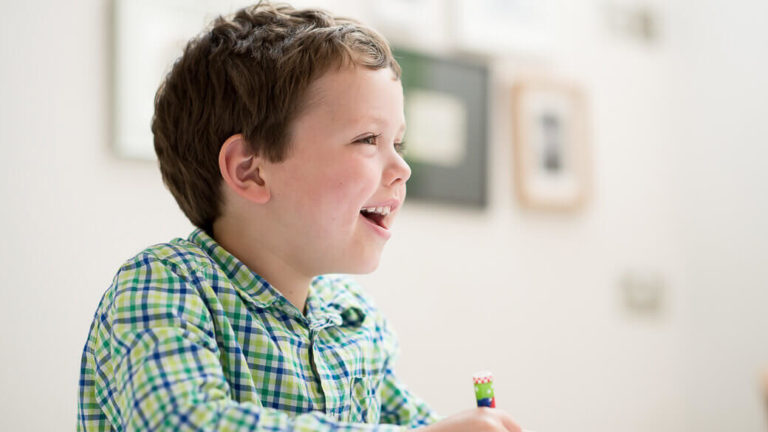It is widely recognised that using practical, hands-on equipment is the best way to teach children early maths skills. In this blog, Rosie (a Qualified Primary teacher and professional tutor) discusses three excellent low-cost resources, and offers tips on how they can be used to teach some fundamental skills.
Number Square
You can download a number square (also known as a hundreds square) from the internet, or make one yourself. They are a fantastic way to develop your child’s sense of number and teach a range of skills:Counting:
A number square square will help your child learn to read numbers as they say them, and spot links and patterns between numbers. Start with the first row (numbers 1-10). Make sure your child can count forwards and backwards confidently (this will help later with addition and subtraction), before moving on to 20, then 100. Recommended activity: Cover up a few numbers on the number square and ask your child to guess which numbers are covered.Adding and Subtracting:
A number square can be used in the same way as a numberline. Show your child how to put their finger on the square and hop forwards for addition, and backwards for subtraction. Start with numbers below 10 (e.g. 5 +2), then move on to sums that cross then 10 barrier (e.g. 8+4) and finally larger numbers (25 + 9). Recommended activity: Turn your number square into a ‘snakes and ladders’ style board. Roll a dice, say the number and move your counter. You could go from 1-100 by adding, or 100-1 by subtracting. For a more challenging version use two dice, add the numbers together and move your counter.Adding and Subtracting 10:
First ask your child to add 10 by counting along, and see what patterns they spot. They should notice that they have moved one row down on the number square. They may also notice that the number in the 10s column increases, but the 1s always stay the same. Use the number square to practise chanting forwards and backwards in 10s from any number. For added challenge, show your child how to add or subtract 20, 30 etc. Recommended activity: Give your child a blank number square and ask them to fill in a given column. You could turn this into a race: Using different coloured pens, players must fill in as many numbers as possible on a blank number square within a time limit. The player with the most correct numbers wins!Counting in Twos, Fives and Tens:
Ask your child to count on in twos, fives or tens and shade in, or a place a counter on, each number that they land on. They will be able to see the numbers they are counting and spot any patterns (e.g that multiples of 5 always end in 5 or 0). This method can also be used to teach children to recognise odd and even numbers. Shade the odd and even numbers on the square in different colours, so that your child can recognise the relationship between the numbers. Recommended activity: Visit the Splat Square website (https://www.primarygames.co.uk/pg2/splat/splatsq100.html). This provides a free, interactive number square where children can ‘splat’ numbers with different colours.Counters
Counters (or sweets, pasta shapes, Lego bricks, buttons..), are another cheap and versatile resource. Use counters to teach the following skills:Counting:
How many counters do I have in my pile? How many would there be if I had one more? Or one less?Adding:
Combine two amounts and add them together. If I have 5 sweets and you have 3 sweets, how many do we have altogether?Subtraction:
Remove an amount from the total. If you have 8 sweets and you eat 3 of them, how many sweets will you have left?Multiplication:
Sort the counters into groups and find the total. If there are 4 sweets in each of these bowls, how many sweets are there altogether?Division:
Divide the counters into equal groups. There are 12 sweets. Can you divide them between our plates so that we both have the same number of sweets? How many sweets will we each get?Coins
Children love playing with money, so coins (plastic or real) are a great way to engage them in maths. Your child will learn the value of coins, whilst at the same time learning a range of fundamental maths skills.Counting in Ones:
Practise counting with 1p coins. You could do this by creating a very simple shop role play: If this toy costs 5p, how many 1p coins do you need to pay?Counting in Twos:
Use 2p coins to practise counting in 2s. If the toy costs 10p, how many 2p coins do you need to pay?Counting in Fives and Tens:
Practise counting with 5p and 10p coins. If a toy costs 50p, how many 5ps do you need to pay? How many 10ps would you need?Further Skills:
As your child’s maths skills develop, you can introduce more complex problems. Can your child find three different ways of making the same total? Take the shop role play further: How much would two items cost? How much change would I receive if I paid with £5?Our tutors are rated 4.9 / 5 based on 1116 reviews.



Start the discussion!